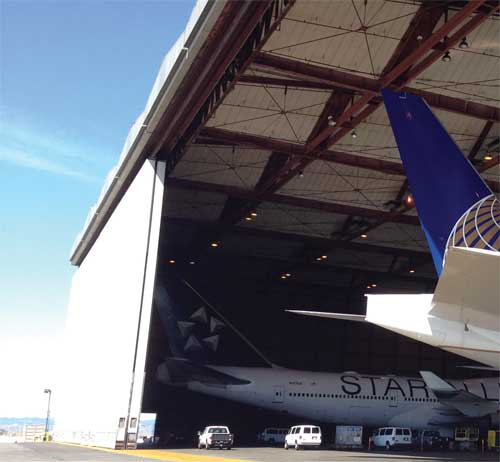 The door controls, motors and gear drives of the Superbay Maintenance Hangar at the San Francisco International Airport needed a retrofit. The previous control system was built in 1969 and consisted of multiple relays, contactors, timers, antiquated power track systems and miles of wiring requiring continuous maintenance.
The door controls, motors and gear drives of the Superbay Maintenance Hangar at the San Francisco International Airport needed a retrofit. The previous control system was built in 1969 and consisted of multiple relays, contactors, timers, antiquated power track systems and miles of wiring requiring continuous maintenance.
The massive hangar boasts two 130 x 90 ft doors, weighing 74,000 lb, on either side. Each door is divided into two halves, each consisting of an inner and ourter dor for a total of eight independently functioning doors. The door sections are mounted on dedicated rails and the rails are offset so that adjacent doors can open and close without interfering with the neighboring door.
MicroSmart Pentra PLCs from IDEC provide control and monitoring of the doors to allow the coming and going of airplanes as large as a 747-400s.
Engineers from San Francisco International Airport’s Design and Con-struction Department attended one of IDEC’s three-day PLC Programming classes and selected IDEC PLCs for the project because of its simplicity, capability and expandability.
Each of the doors’ two halves is driven by two sets of drives. Each drive is controlled by one variable frequency motor drive. Each drive is capable of driving the entire door; however, the airport engineers required redundancy of drives for each door.
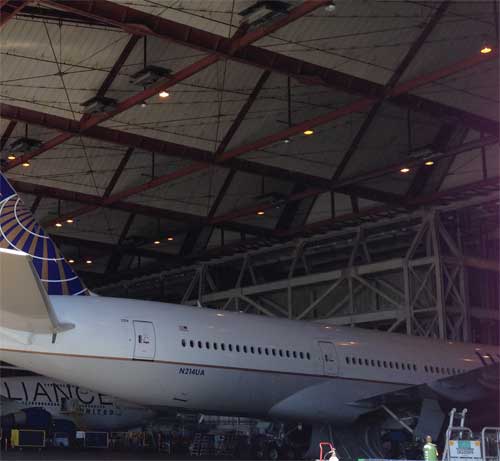
IDEC PLCs control the opening and closing of 37-ton hangar doors to allow airplanes as large as a 747 to enter and leave the hangar.
Each door has an IDEC MicroSmart Pentra PLC that connects to the two VFDs through Modbus, communicating in ASCII with this RS485 connection. The PLC also has inputs for on/off switches, photoelectric sensors and a laser sensor that checks for people or objects in the path of the door.
From the IDEC HG4G touchscreen Human Machine Interface (HMI), the operator starts the door open sequence. Because each hangar door has inner and outer doors, the operator has to command each door to open from that door’s touchscreen. Similarly, when an airplane completes its passage through the door, the operator uses the touchscreens to command the PLCs to close the inner and outer doors.
The eight PLCs controlling all eight doors are centrally located, making it easy for a single operator to close all eight doors when needed. Plans for the future are to have a Master PLC that can control all doors, and set up each door PLC as a slave. Also, a wireless connection from a remote location will be set up to serve as a fire control.
The PLC monitors all safety sensors to ensure that the doors are moving properly. If the doors stop for any reason, the PLC analyzes the problem, informs the operator and displays a troubleshooting screen on the HMI.
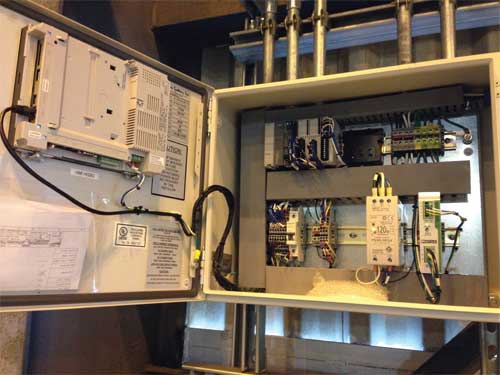
An IDEC Pentra PLC controls the two VFD drives that open and close the door. Each hangar has eight doors, and each door has a PLC controller.
The IDEC MicroSmart Pentra PLC supports 32-bit processing, has floating-point math functions, Modbus master and slave capabilities, seven communication ports, up to 512 digital I/O and 56 analog I/O, and can be expanded easily if needed.
The PLC has web server capability, which allows access to the PLC from mobile devices and the Internet with any browser. The PLC has both Ethernet and Modbus communications. IDEC’s Automation Organizer software provides two packages for programming: WindLDR for programming the PLC in relay ladder logic and function blocks, and IDEC’s WindO/I-NV2 for programming the touchscreen HMI.
WindLDR allows online editing and simulation, while WindO/I-NV2 provides tools for programming graphical screens with a library containing 5000 symbols, which simplified the programming effort and saved design time.
Using Automation Organizer, the system was programmed to allow touchscreen control of all functions, display device status, trigger alarms, present troubleshooting displays, calculate scaling for the laser sensors and keep track of the time the drives are in use for maintenance purposes.
Because of the simulation capability of the IDEC system, startup of the first door and fine adjustment took less than a day and the other doors were in operation within a few hours. The system also allowed engineers to add features and options, such as interlocking the “Man Doors” that are installed as part of the hangar doors. These man doors are standard-sized doors that are embedded and constructed as an integral part of the hangar doors, which allow aircraft mechanics to enter and leave the hangar when the main doors are closed. After installation of the man doors, the PLC and HMI were programmed to interlock the doors with the operation of the hangar doors. If any of these doors are open, the hangar door will not operate and will display on the HMI why the door is not running and which man door is left open.
The system has been reliable and trouble-free since the first set of doors went online in March 2014.
IDEC
www.idec.com/usa
Filed Under: Factory automation, Displays • HMIs • operator interfaces • monitors, MOTION CONTROL, Relays, MORE INDUSTRIES, PLCs + PACs

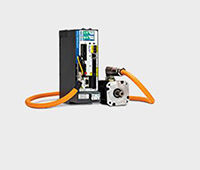
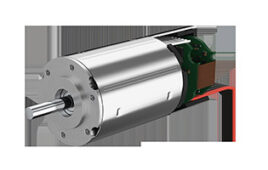
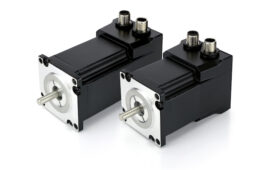
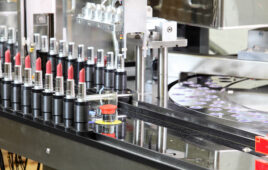
Tell Us What You Think!